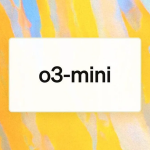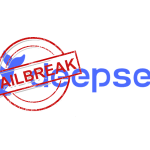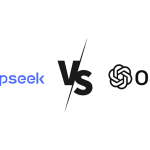Perplexity AI copyright infringement, a rising star in the artificial intelligence sector, has been accused of a significant copyright violation by two major publishers—the New York Post and Dow Jones & Co., the publisher of the Wall Street Journal. The lawsuit highlights growing tensions between AI companies and traditional media, raising questions about fair use, the future of journalism, and the ethical responsibilities of AI developers.
In this article, we explore the details of these allegations, what it means for the future of AI-powered search engines, and why the tension between AI start-ups and news publishers continues to grow. Let’s delve into the story.
What is Perplexity AI copyright infringement?
Perplexity AI, founded in 2022, is an innovative AI-powered search engine that compiles information from various reliable sources—including articles, journals, and reputable websites. This approach allows users to receive concise and accurate responses, each complete with footnotes and links back to the original content.
Since its inception, Perplexity has gained notable backing, including financial support from Amazon founder Jeff Bezos. In June, the start-up achieved a valuation of $3 billion, and, as recently reported by ReadWrite, is currently undergoing another funding round with the goal of raising $500 million, pushing its valuation to a staggering $8 billion.
However, as the company continues to grow, so do the legal and ethical concerns surrounding its content aggregation approach. This has led to the current legal troubles Perplexity is facing.
Why Are Dow Jones and the New York Post Suing Perplexity AI for copyright infringement?
The lawsuit initiated by Dow Jones & Co. and the New York Post revolves around alleged breaches of the Copyright Act. According to the plaintiffs, Perplexity is copying and storing content from their platforms, essentially republishing it without authorization. This, they argue, is a clear violation of copyright law, undermining the hard work of journalists who invest considerable time and effort into producing in-depth, investigative stories.
Dow Jones and the New York Post argue that Perplexity’s answer engine effectively sidesteps the need for users to visit the original sources. The company’s slogan to “skip the links” has further irked publishers, who claim that Perplexity’s approach dissuades readers from directly engaging with the original articles—a primary revenue stream for digital news outlets that rely on advertising and subscriptions.
The plaintiffs also allege that Perplexity’s outputs, which include direct quotes from their copyrighted articles, contribute further to the infringement. Not only is the content being copied and stored, but it is also being compiled into responses, often without adequate context or permission from the original publishers.
The Broader Issue of Copyright and AI
The case against Perplexity AI copyright infringement is part of a broader conversation about the ethical responsibilities of AI and machine learning technologies in content aggregation. As AI tools become increasingly sophisticated, they raise new questions about fair use and copyright law.
For publishers, content is the lifeblood of their business, and the growing tendency of AI search engines to scrape and reuse content—often without providing proper compensation or traffic—is understandably alarming. The New York Post and Dow Jones are not the only ones taking issue with Perplexity. Recently, reports surfaced that The New York Times also issued Perplexity with a cease and desist notice, citing similar concerns about copyright infringement.
The legal issues for Perplexity AI copyright infringement underscore an ongoing battle between AI developers and content creators over the value of original work and the obligations of AI companies to respect existing intellectual property laws.
How AI Companies Can Navigate Copyright Concerns
To address these challenges, AI companies must consider new ways to work with content creators, rather than against them. One potential solution is the implementation of licensing agreements that fairly compensate publishers when their content is used by AI systems. For instance, just as Google pays publishers through initiatives like the Google News Showcase, Perplexity and similar companies could establish compensation programs that provide value to content creators.
Another approach is increasing transparency about how information is sourced and used. While Perplexity does include footnotes and links in its responses, more robust credit to original authors and efforts to drive traffic back to original sites might help mitigate some of the tension. Encouraging users to engage directly with the source—rather than merely “skipping the link”—could also foster better relationships between AI companies and content creators.
The Future of AI and Content Ownership
The dispute between Perplexity AI copyright infringement and publishers like the New York Post and Dow Jones is likely just the tip of the iceberg when it comes to conflicts between AI companies and traditional media outlets. As AI technologies evolve, so too must our understanding of content ownership, fair use, and the responsibilities of tech companies in this space.
Publishers are becoming more vocal about the need to protect their content from unauthorized use, and lawmakers are beginning to pay attention. We could see new legislation introduced in the coming years that clarifies the extent to which AI companies can utilize and repurpose third-party content. For now, the Perplexity lawsuit will serve as an important precedent, potentially influencing how other AI-driven platforms approach content aggregation and copyright compliance.
Strengthening Collaboration Between AI and Media Outlets
As the debate over AI content aggregation intensifies, a growing consensus suggests that collaboration rather than conflict could pave the way forward. To address copyright concerns effectively and foster a mutually beneficial relationship, both AI companies and media outlets must explore innovative strategies. Here are some actionable steps that could help bridge the divide:
1. Establishing AI-Publisher Partnerships
AI companies like Perplexity can initiate partnerships with publishers to create a win-win model. By licensing content directly from news outlets, AI platforms can ensure legal compliance while compensating publishers for their work. These partnerships could also open doors for publishers to gain exposure to new audiences who might not otherwise engage with their content.
2. Revenue-Sharing Models
Following the footsteps of initiatives like Google News Showcase, Perplexity and similar AI companies could implement revenue-sharing models. When AI platforms benefit financially from summarizing or referencing content, sharing a portion of that revenue with content creators could provide a sustainable framework for collaboration.
3. Improved Attribution Standards
AI platforms must go beyond basic attribution. By prominently displaying author names, publication details, and direct links to the original content, AI tools can ensure proper credit is given. Encouraging users to engage directly with source material—rather than just relying on summaries—could help restore traffic and revenue streams for publishers.
4. Transparent Content Sourcing Practices
Developing clear guidelines for how content is scraped, stored, and utilized is critical. AI companies should work with publishers to establish transparent practices that align with copyright laws and ethical standards. This transparency can foster trust and reduce legal disputes.
5. Advocacy for Legislative Clarity
Both AI companies and publishers can benefit from clearer legislation regarding fair use and copyright in the AI era. Collaborative efforts to influence policymakers could result in guidelines that protect intellectual property while enabling technological innovation.
Conclusion
The copyright infringement allegations against Perplexity AI copyright infringement underscore the complex and evolving relationship between artificial intelligence and content ownership. While Perplexity has undoubtedly created a powerful tool that enhances user experience through convenient, summarized answers, it must balance this innovation with the ethical and legal responsibilities that come with using others’ work.
For the future of AI to be harmonious with that of journalism and content creation, collaboration, fair compensation, and transparency must become core components of how AI companies operate. Only by working together can AI platforms and content creators ensure mutual growth and respect in this rapidly changing digital landscape.
What are your thoughts on the conflict between AI companies and traditional media outlets over content use? Share your opinions in the comments below. Don’t forget to subscribe to stay updated on the latest developments in AI and copyright laws.






